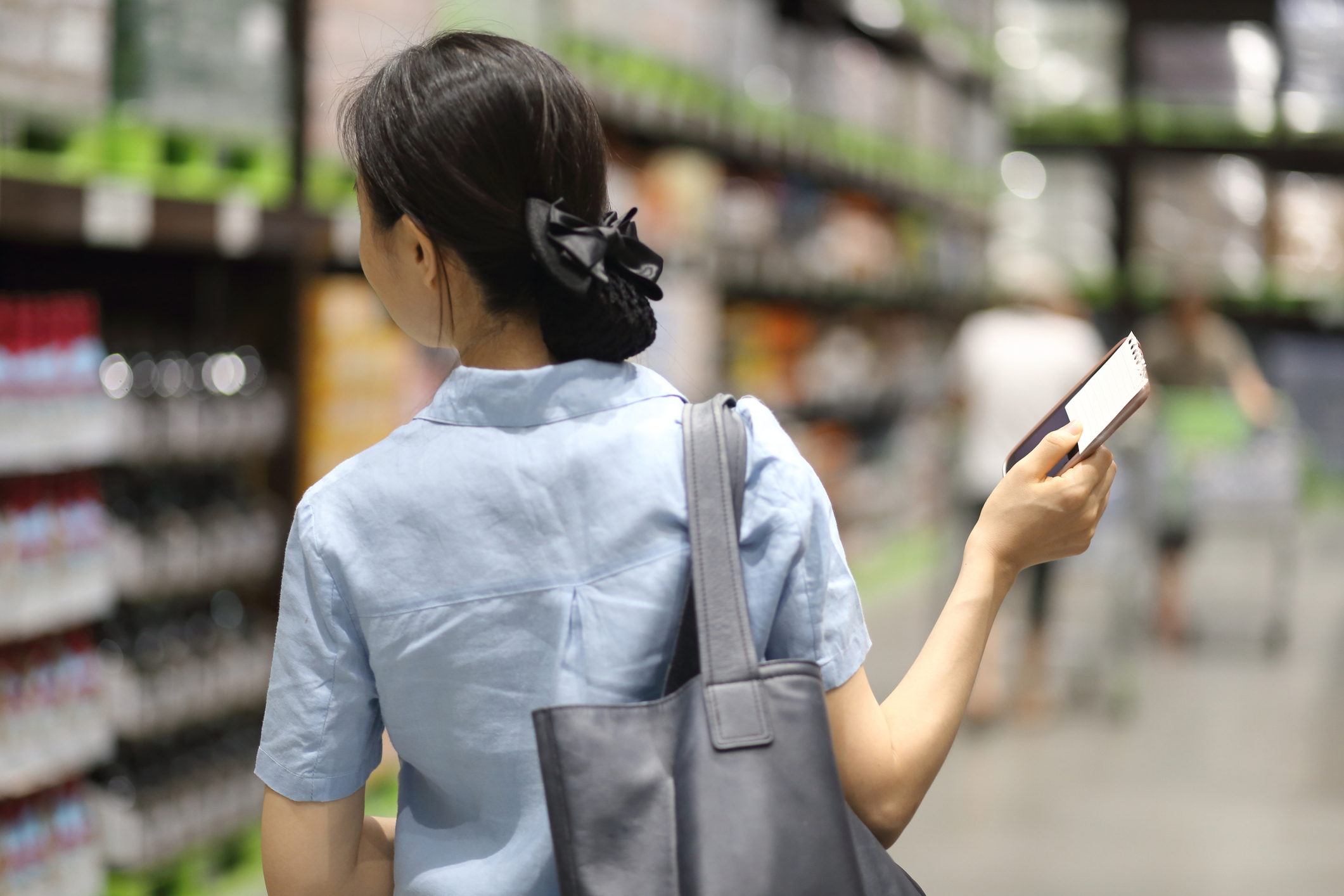This Country Will Police ‘Shrinkflation’ at the Supermarket
South Korea will soon require companies that slim down products to show the old and new sizes on packaging
SEOUL—Food prices have risen so much that Kim Soo-yeon has developed a suspicious new habit at the grocery store. She has taken to shaking bags of her favourite brands of potato chips to see if they feel lighter.
“If companies are reducing the amount of food by unnoticeable amounts, it feels deceptive,” said the 32-year-old office worker in Seoul.
South Korean authorities will soon be backing her up in the supermarket aisles.
Seeking to temper the effects of inflation, many countries have sought to use political pressure to dissuade food makers from gouging consumers—with higher prices or lower volumes. South Korea is taking things a step further.
Starting next year, the country will require companies to disclose on their packages and websites when grocery items drop in volume, but not price. To ensure firms comply, South Korea is establishing a dedicated price-investigation team to monitor any fluctuations. Officials are considering levying fines, too.
South Korea’s muscular response to “shrinkflation” reflects how a sluggish economy—its projected full-year growth of 1.4% is roughly half that of other wealthy countries—has become a major problem for President Yoon Suk Yeol, whose approval ratings remain stuck in the mid-30s. Those unhappy with Yoon most commonly cite economic issues.
The new proposals to fight shrinkflation came as the government unveiled an initial list of violators. Following a monthlong investigation, authorities said the offerings of everything from beer to Vienna sausages to dumplings had quietly gotten smaller. Some 16 variants of flavoured almonds had shrunk, too.
Choi Si-yeon, a 28-year-old office worker, said she was angry when she found out about what had happened with her favorite wasabi-flavored almonds. Each bag contained 20 grams less, a seemingly undetectable amount.
“If they had raised the price, at least some consumers would notice,” Choi said.
The maker of the snack, a South Korean firm called HBAF, for Healthy But Awesome Flavors, said it had disclosed the product-size changes on its website. The firm pointed to the pandemic, a rise in labor costs and almond prices as factors.
Other companies also claimed to have made online disclosures or argued the slimmed-down offerings were part of flavour revamps.
Shrinkflation backlash has emerged elsewhere, too. France’s second-largest supermarket chain, Carrefour, has put up bright orange signs to highlight products it deems subject to shrinkflation since September. In the U.S., Sen. Bob Casey (D., Pa.) recently issued a report on shrinkflation, citing facial tissues and Oreos as examples.
With costs rising, what is often lacking is transparency over potential changes, creating room for a sense of injustice when shrinkflation occurs, said Rajiv Biswas, chief economist for the Asia-Pacific region at S&P Global Market Intelligence. “Consumers can’t check the website of hundreds of products,” he said.
Headline inflation in South Korea topped out at 6.3% in July 2022 from the prior year, below the recent peaks of 9.1% in the U.S. and 11.1% in the U.K. But food prices in the East Asian country had remained relatively low for decades, so the recent upticks have triggered outsize anger. Wages haven’t kept pace with rising prices. The country’s housing market—the main source of wealth for many South Koreans—has stagnated.
A majority of South Koreans plan to spend less money next year, according to a recent poll, with nearly half of respondents citing inflation as the chief reason.
Low inflation had been a particular policy priority for South Korea over the decades, helping the country’s export-heavy economy maintain a good environment for private investment, said Randall Jones, a former senior official at the Organization for Economic Cooperation and Development who led the group’s economic reports on South Korea.
“People aren’t used to inflation in South Korea,” said Jones, who is now a distinguished fellow at the Korea Economic Institute of America, a think tank based in Washington, D.C.
South Korea is conducting daily price checks for more than two dozen staple items such as milk and ramen noodles. The country’s antitrust regulator will list any shrinkflation examples on a newly created website and will handle enforcement of the new measures. The government wants to ink agreements with large South Korean retailers to build a joint monitoring system for some 10,000 everyday items.
That sliced cheese and other inexpensive items were among the first named shrinkflation violators irks people like Lee Hyun-woo, a 23-year-old university student. “If even processed food is shrinking, I feel betrayed,” Lee said.
In recent weeks, the country’s shrinkflation suspicions have touched everything from the cubed white radish accompanying Korean fried chicken to the cream density of a slice of strawberry cake.
Kim Young-hee, a 42-year-old homemaker, is glad about more government transparency. But the extra knowledge likely won’t change her habits, such as her occasional purchase of honey-butter almonds for her children.
“I’ll still buy the almonds,” Kim said, “but I don’t want to be tricked.”
 Copyright 2020, Dow Jones & Company, Inc. All Rights Reserved Worldwide. LEARN MORE
Copyright 2020, Dow Jones & Company, Inc. All Rights Reserved Worldwide. LEARN MORE
This stylish family home combines a classic palette and finishes with a flexible floorplan
Just 55 minutes from Sydney, make this your creative getaway located in the majestic Hawkesbury region.
Continued stagflation and cost of living pressures are causing couples to think twice about starting a family, new data has revealed, with long term impacts expected
Australia is in the midst of a ‘baby recession’ with preliminary estimates showing the number of births in 2023 fell by more than four percent to the lowest level since 2006, according to KPMG. The consultancy firm says this reflects the impact of cost-of-living pressures on the feasibility of younger Australians starting a family.
KPMG estimates that 289,100 babies were born in 2023. This compares to 300,684 babies in 2022 and 309,996 in 2021, according to the Australian Bureau of Statistics (ABS). KPMG urban economist Terry Rawnsley said weak economic growth often leads to a reduced number of births. In 2023, ABS data shows gross domestic product (GDP) fell to 1.5 percent. Despite the population growing by 2.5 percent in 2023, GDP on a per capita basis went into negative territory, down one percent over the 12 months.
“Birth rates provide insight into long-term population growth as well as the current confidence of Australian families,” said Mr Rawnsley. “We haven’t seen such a sharp drop in births in Australia since the period of economic stagflation in the 1970s, which coincided with the initial widespread adoption of the contraceptive pill.”
Mr Rawnsley said many Australian couples delayed starting a family while the pandemic played out in 2020. The number of births fell from 305,832 in 2019 to 294,369 in 2020. Then in 2021, strong employment and vast amounts of stimulus money, along with high household savings due to lockdowns, gave couples better financial means to have a baby. This led to a rebound in births.
However, the re-opening of the global economy in 2022 led to soaring inflation. By the start of 2023, the Australian consumer price index (CPI) had risen to its highest level since 1990 at 7.8 percent per annum. By that stage, the Reserve Bank had already commenced an aggressive rate-hiking strategy to fight inflation and had raised the cash rate every month between May and December 2022.
Five more rate hikes during 2023 put further pressure on couples with mortgages and put the brakes on family formation. “This combination of the pandemic and rapid economic changes explains the spike and subsequent sharp decline in birth rates we have observed over the past four years,” Mr Rawnsley said.
The impact of high costs of living on couples’ decision to have a baby is highlighted in births data for the capital cities. KPMG estimates there were 60,860 births in Sydney in 2023, down 8.6 percent from 2019. There were 56,270 births in Melbourne, down 7.3 percent. In Perth, there were 25,020 births, down 6 percent, while in Brisbane there were 30,250 births, down 4.3 percent. Canberra was the only capital city where there was no fall in the number of births in 2023 compared to 2019.
“CPI growth in Canberra has been slightly subdued compared to that in other major cities, and the economic outlook has remained strong,” Mr Rawnsley said. “This means families have not been hurting as much as those in other capital cities, and in turn, we’ve seen a stabilisation of births in the ACT.”
This stylish family home combines a classic palette and finishes with a flexible floorplan
Just 55 minutes from Sydney, make this your creative getaway located in the majestic Hawkesbury region.






















